Pomaireware™ is well made and will last many years with proper use and care. The pieces can be used in the oven, in the microwave or a stovetop, and can go directly to the table for a sophisticated presentation. The pieces can be used directly on a gas or electric range, however, it is recommended to use a heat diffuser on electric ranges. The heat diffuser (which can be used with gas stove as well) has the added benefit of distributing the heat slowly to prevent foods from burning. Clay cookware can also be used on induction cooktops with the use of an induction cookware interface disk.
The pieces must not be submitted to drastic changes in temperature. The pieces should be allowed to adjust slowly to heat, letting them slowly heat up until they are hot, either on the stove or in the oven. Likewise, you should also allow the pieces to adjust to room temperature before washing or storing them, and never sit a hot pot on a cold surface such as granite or tile.
The pieces retain heat for a long period of time, therefore be careful in handling a hot pot.
For cleaning, avoid using the dishwasher and hand washing is recommended. After each use, fill with warm, soapy water, allowing to soak briefly if heavily soiled, then scrubbing lightly with a sponge or soft cloth.
Do not use metal or abrasive pads as they may scratch the surface and avoid strongly scented soaps which can flavor the clay. Use wooden utensils with the pieces as metal utensils can scratch and damage the inside.
Appearance
Appearance
As with most handmade products by artisans around the world, the pieces may have slight imperfections in the form or finish of the materials. Sometimes sizes of same model pieces may also vary slightly, however, these imperfection do not compromise the aesthetics or functionality of the pieces and are considered normal and to be expected. This is especially evident on the outside coloration which depending on its position inside the kiln, the coloration pattern and intensity will be unique to the piece. Likewise, although lids are made individually to match each pot, they do not always fit perfectly as the two parts may shrink differently during the firing process.
You may observe with certain use that your pieces may change in color, especially on the bottom where there is direct contact with heat. This is normal and does not affect the pieces in any way.



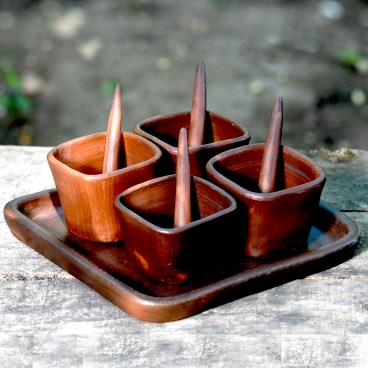


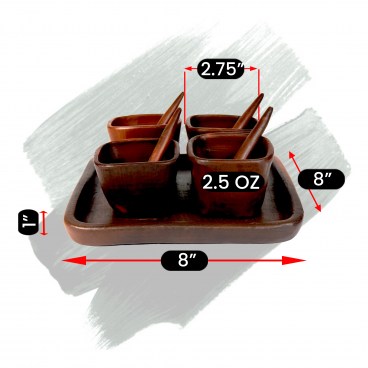
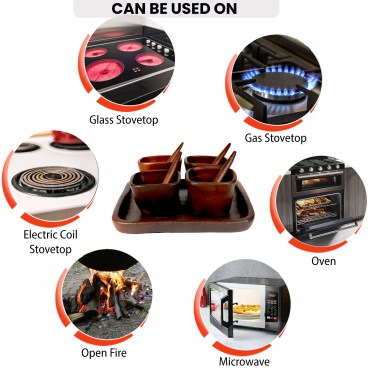


 Pomaireware Clay Plate - Small
Pomaireware Clay Plate - Small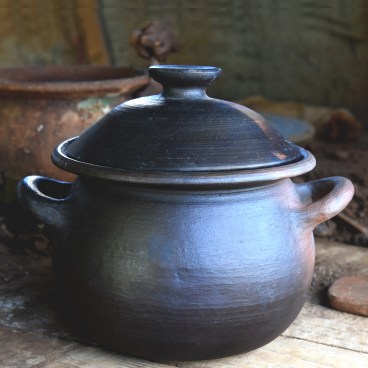 Pomaireware Round Pot
Pomaireware Round Pot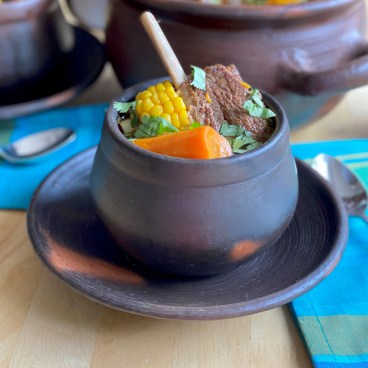 Pomaireware Soup Bowl
Pomaireware Soup Bowl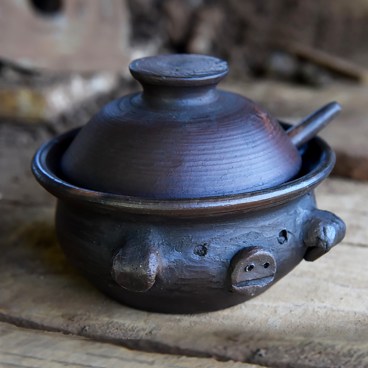 Pomaireware Pig Faced Salsa Dish
Pomaireware Pig Faced Salsa Dish